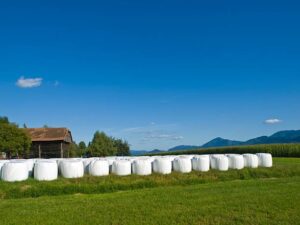Custom sheds can be built for many purposes, from storage to a playhouse for children. It also helps keep products safe from climate damage, like harsh sun rays and snow.
Before starting construction, check with local authorities for zoning regulations and square footage rules. Once you have your permit, begin by assembling the walls on the flat surface of the shed platform, using chalk lines to maintain precision. For professional Aldinga Home Improvements services, check this out.
Customisation
Custom sheds are made to fit the space on your property, making them a great addition to any home. They are also more durable and sturdy than pre-made sheds and can be customised to fit your needs. However, it is essential to remember that these structures must be built with high-quality materials if they will last. If you are considering a custom shed, speak with your local township to determine what square footage and construction requirements are in place. You may also want to check whether or not you need a building permit for this type of structure.
A Shed That’s Designed for You
If you’re looking for a shed that can be used as a workshop, storage space, or playroom, a custom-built shed is the right choice. With the help of a professional, you can design a shed perfect for your unique needs. The process begins with choosing a floor plan and then selecting the materials. You can also add custom features to your shed, such as windows and pegboards. Adding these accessories will make your shed more functional and attractive.
When you choose a custom shed, you can customise its appearance by choosing a colour and trim scheme that matches the style of your house or surrounding area. This way, your new shed will blend seamlessly with your yard’s aesthetic. Some homeowners even go as far as incorporating it into their landscaping, allowing them to enjoy their new structure from inside and out.
Another option for designing your shed is the flooring and foundation. It is essential to the shed’s stability and durability, mainly for work or play. The floor should be constructed of pressure-treated wood to ensure long-term resistance to rot and pests. You can also opt for concrete slab or pier foundations to provide excellent stability and support.
Other custom options include windows and skylights, which allow natural light to penetrate the shed. It will enhance the appearance and feel of the shed and is also a helpful feature in preventing moisture buildup and mould. You can also add insulation to your shed for warmth and comfort, making it more usable in winter and summer. For professional Aldinga Home Improvements services, check this out.
Increased Home Value
A shed can increase your home value by giving you extra space to store items like yard tools, furniture and other equipment. The shed can also protect these items from harsh weather conditions, such as snow and hail. A shed can also add curb appeal to your property by reducing the clutter and making cleaning easier. Depending on the shed type and location you choose, it can also help improve your yard’s appearance. A storage shed can even protect your valuables from thieves if locked.
While a storage shed can add value to your property, you must choose the right one and build it well. A run-down or ugly shack can detract from the value of your home and may make it harder to sell. In addition, you must ensure that your shed matches the style of your house and blends in with the rest of your yard.
Less Maintenance
A custom shed can be built to your specifications and usually requires less maintenance than a pre-built model. It is because you are involved in the construction process and select the materials used. A high-end custom shed will also feature cutting-edge technology and materials that will stand the test of time. For professional Aldinga Home Improvements services, check this out.

 When
When